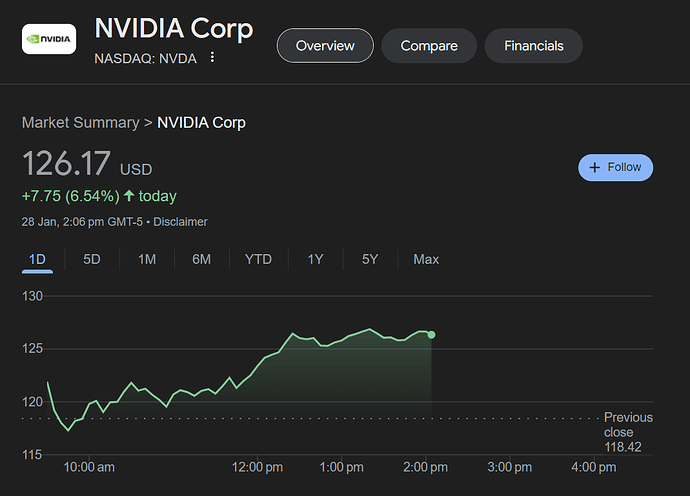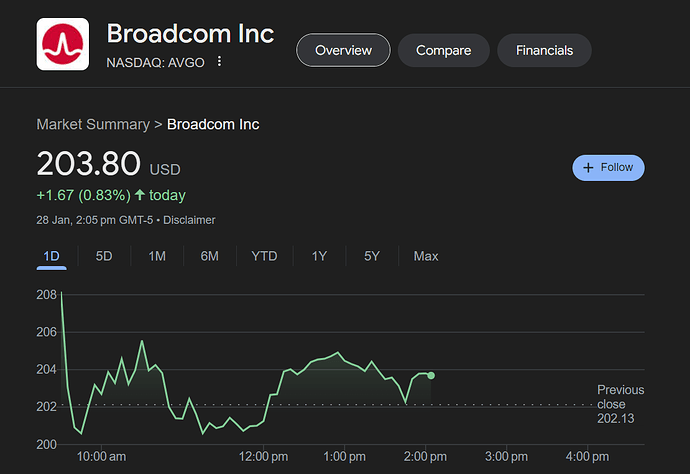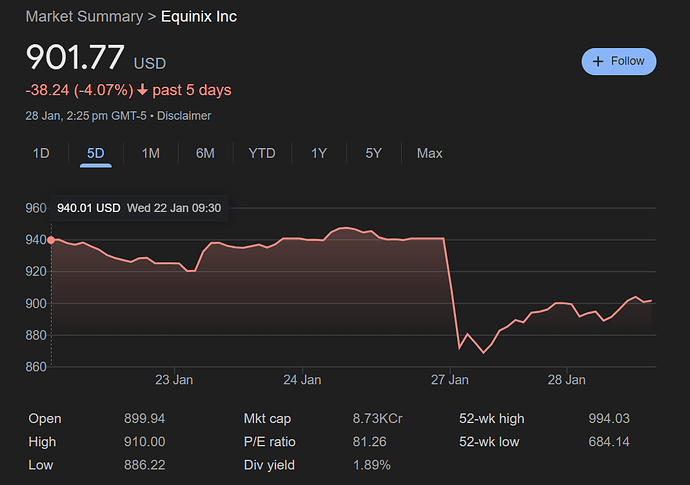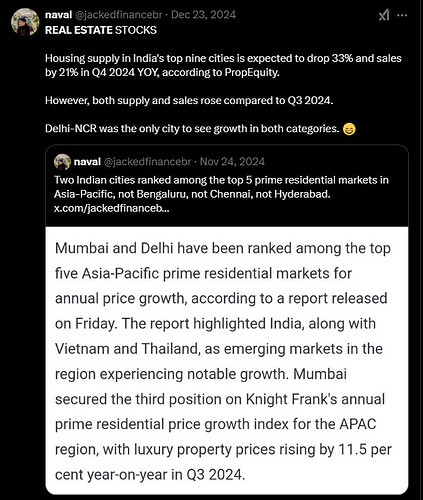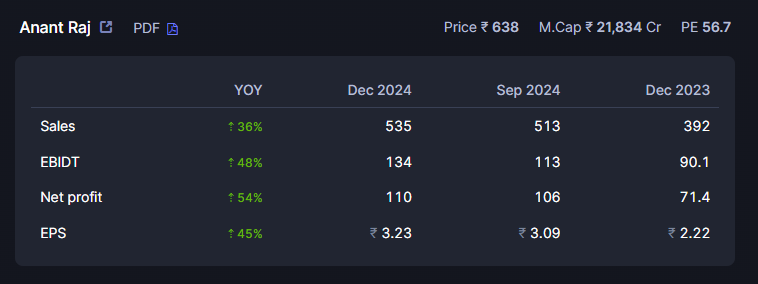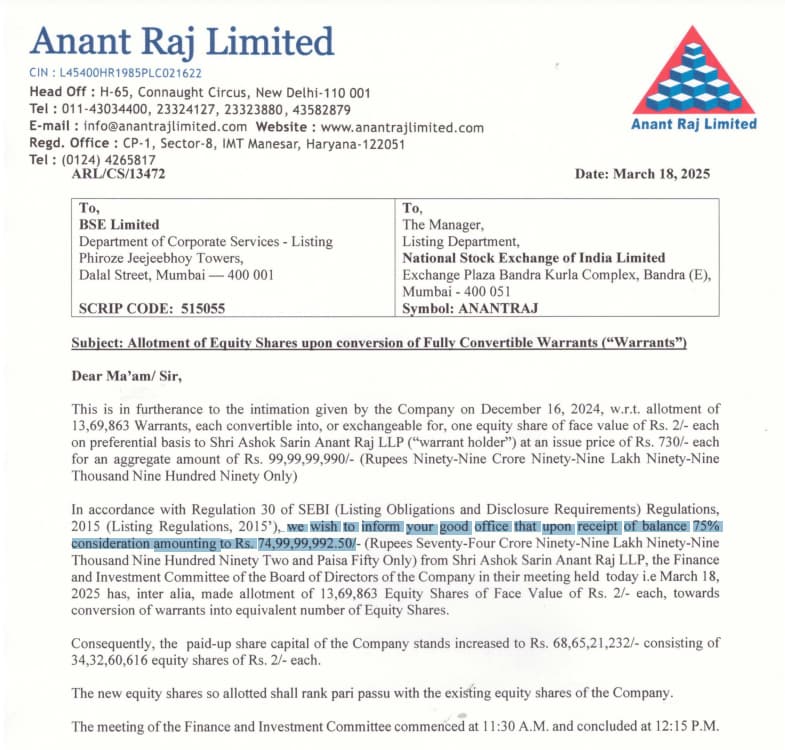Some more data to clear the confusion in the aftermath of Deepseek SEIGE.
Courtesy: Tweet by Tushar Bohra (@tusharbohra)
Deepseek’s impact on datacenter requirements - a reasoning! Generated using Deepseek 
Question: Due to the introduction of Deepseek AI, there is fear that computing resource requirements and the need for NIVIDIA chips and number / scale of datacenters required to be built will come down drastically, as Deepseek has been built at a fraction of Open AI’s cost and also requires much less computing power. I want you to reason out whether the above logic is correct and if not, why not. More importantly, I want your help to build a case that datacenter requirements will continue to rise even in the event that individual AI tools / LLMs need lower computing power, as the number and nature of queries and consequent processing requirements will only go up as using AI tools becomes cheaper. Please use as many scientific papers / expert opionions / other sources to build upon your argument, and give necessary references to the same.
Answer: Your concern is well-founded, and the argument that datacenter requirements will continue to rise despite advancements in AI efficiency like Deepseek is supported by several factors. Below, I will build a case using scientific research, expert opinions, and industry trends to demonstrate why computing infrastructure demands will likely increase, even if individual AI models become more efficient.
1. Efficiency Gains Are Offset by Increased Demand
While Deepseek and similar innovations may reduce the computational cost of training and running individual AI models, the overall demand for AI services is growing exponentially. This phenomenon is often referred to as Jevons Paradox, where improvements in efficiency lead to increased consumption rather than reduced resource use.
-
Evidence: A 2020 paper by Lacoste et al. in Nature Climate Change highlights that despite improvements in AI model efficiency, the total energy consumption of AI systems continues to rise due to increased adoption and usage. The paper emphasizes that efficiency gains alone cannot counteract the surge in demand for AI-driven applications.
-
Reference: Lacoste, A., Luccioni, A., Schmidt, V., & Dandres, T. (2020). Quantifying the Carbon Emissions of Machine Learning. Nature Climate Change.
-
Expert Opinion: Andrew Ng, a leading AI researcher, has repeatedly stated that the democratization of AI will lead to a proliferation of applications, many of which will require significant computational resources. He argues that while individual models may become more efficient, the sheer volume of AI-driven tasks will drive up infrastructure needs.
-
Source: Andrew Ng’s public talks and writings on AI democratization.
2. Expansion of AI Use Cases
As AI tools become cheaper and more accessible, their applications will expand into new domains, many of which are computationally intensive. For example:
-
Real-time AI: Applications like autonomous vehicles, robotics, and real-time language translation require low-latency processing, which often necessitates edge computing and distributed datacenters.
-
Personalized AI: The rise of personalized AI assistants, healthcare diagnostics, and recommendation systems will generate massive amounts of data that need to be processed in real-time.
-
Scientific Research: AI is increasingly being used in fields like genomics, climate modeling, and drug discovery, which require vast computational resources.
-
Evidence: A 2021 report by McKinsey & Company predicts that AI adoption will grow at a compound annual growth rate (CAGR) of 25% over the next decade, driven by new use cases across industries.
-
Reference: McKinsey & Company. (2021). The State of AI in 2021.
3. Data Growth and Processing Requirements
The amount of data generated globally is growing at an unprecedented rate, and AI systems are both consumers and producers of this data. As AI tools become cheaper, the volume of data processed will increase, driving the need for more datacenters.
-
Evidence: According to IDC’s Global DataSphere Forecast, the global datasphere will grow from 64 zettabytes in 2020 to 180 zettabytes by 2025. Much of this growth is driven by AI and machine learning applications.
-
Reference: IDC. (2021). Worldwide Global DataSphere Forecast.
-
Expert Opinion: Dr. Jonathan Koomey, a leading researcher in energy and computing, has argued that data growth is a key driver of datacenter expansion. He notes that even if individual computations become more efficient, the total energy and infrastructure requirements will rise due to the sheer scale of data processing.
-
Source: Koomey, J. (2018). Growth in Data Center Electricity Use 2005 to 2010.
4. Rise of Edge Computing and Distributed AI
As AI applications move closer to the end-user (e.g., smartphones, IoT devices, and edge datacenters), the need for distributed computing infrastructure will grow. This trend will require more datacenters, not fewer, as processing is decentralized.
-
Evidence: A 2022 report by Gartner predicts that by 2025, 75% of enterprise-generated data will be processed at the edge, up from less than 10% in 2021. This shift will necessitate significant investments in edge datacenters.
-
Reference: Gartner. (2022). The Future of Edge Computing.
-
Expert Opinion: Dr. Mahadev Satyanarayanan, a pioneer in edge computing, has emphasized that the growth of AI at the edge will require a new generation of datacenters designed for low-latency, high-throughput processing.
-
Source: Satyanarayanan, M. (2017). The Emergence of Edge Computing.
5. Regulatory and Ethical Considerations
As AI becomes more pervasive, regulatory and ethical requirements will drive the need for additional computing resources. For example:
-
Explainable AI: Regulations like the EU’s AI Act may require AI systems to provide detailed explanations for their decisions, which can increase computational overhead.
-
Data Privacy: Compliance with data privacy laws (e.g., GDPR) often requires localized data processing, leading to the construction of more regional datacenters.
-
Evidence: A 2023 study by Stanford’s Institute for Human-Centered AI highlights that regulatory requirements for transparency and fairness in AI systems can significantly increase computational demands.
-
Reference: Stanford HAI. (2023). The Computational Costs of Ethical AI.
6. Long-Term Trends in AI Development
Even if Deepseek and similar innovations reduce the cost of training AI models, the long-term trend in AI development points toward larger, more complex models. For example:
-
Multimodal AI: Models like OpenAI’s GPT-4 and Google’s Gemini are increasingly multimodal, processing text, images, audio, and video simultaneously. These models require significantly more computational resources than their predecessors.
-
General AI: The pursuit of artificial general intelligence (AGI) will likely require unprecedented levels of computing power, regardless of efficiency gains.
-
Evidence: A 2023 paper by Sevilla et al. in AI and Ethics analyzes the computational requirements of state-of-the-art AI models and concludes that the trend toward larger models is unlikely to reverse.
-
Reference: Sevilla, J., et al. (2023). Compute Trends Across Three Eras of Machine Learning.
Conclusion
While innovations like Deepseek may reduce the computational cost of individual AI models, the overall demand for datacenters and computing infrastructure will continue to rise due to:
- Increased adoption and proliferation of AI applications.
- Exponential growth in data generation and processing requirements.
- The rise of edge computing and distributed AI systems.
- Regulatory and ethical considerations.
- Long-term trends toward larger, more complex AI models.
Investors should view these trends as an opportunity rather than a threat, as the growing demand for AI infrastructure will create significant opportunities for investment in datacenters, edge computing, and related technologies.

